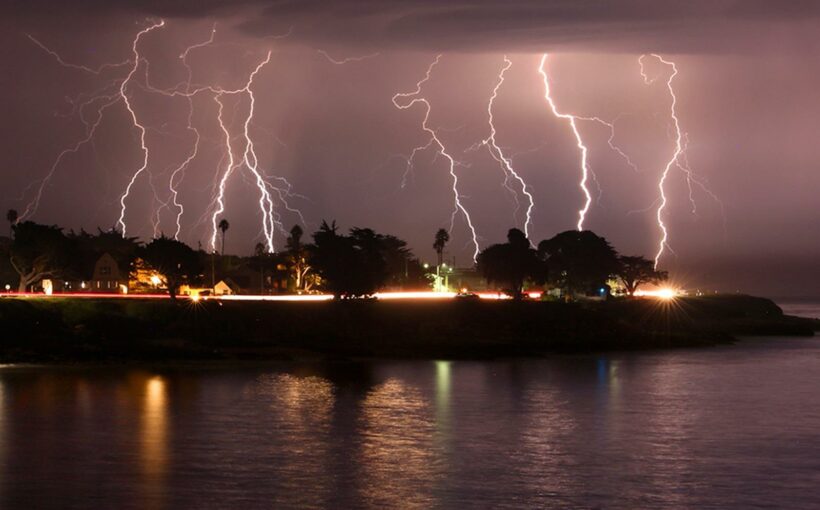PARTS of the US are expected to face severe weather as thunderstorms push inland.
Forecasters estimate that California could be the worst hit state with chances of erratic winds, isolated showers and lightning significantly raised.
Where is lightning striking near me?
Severe weather is expected to hit Northern California after a red flag warning was issued across parts of the west coast.
Particular areas of concern include the North Bay mountains and valleys, East Bay hills and valleys and Diablo Range according to The National Weather Service.
They also reported that there is even potential for fires to start from the effects of lightning with little rainfall.
Sacramento meteorologist Andy Moffitt said "This is turning into a very bad situation, prolific lightning in numerous directions continues."
Meanwhile, on the East Coast, Florida and areas of Miami continue to look the most likely to experience lightning storms.
The region is considered the 'lightening capital' and averages well over 100 days a year with a thunderstorm reported.
But further up the coast, areas such as New Jersey has avoided severe weather storms, despite the potential effects of Hurricane Ida.
The National Weather Service said says the threat of heavy rain and potential flash flooding will be decreasing through the morning, though the cold front will be slow to push away.
How can I track lightning and thunderstorms?
A number of weather maps online can help you track the thunderstorm as it sweeps across the US.
The National Weather Service provides a updates of the storm as it makes it way through certain states.
You can also track the lightning via the live map here.
How do I stay safe in lightning and thunderstorms?
The CDC says the best thing to do during a thunderstorm is to shelter while the storm is taking place.
If inside unplug non-essential electric items too.
If you are outside it is important to avoid water and find an open place that is at a safe distance from trees, poles, or metal objects.
Other official advice from CDC includes:
- Immediately get off elevated areas such as hills, mountain ridges, or peaks.
- Never lie flat on the ground. Crouch down in a ball-like position with your head tucked and hands over your ears so that you are down low with minimal contact with the ground.
- Never use a cliff or rocky overhang for shelter.
- Immediately get out of and away from ponds, lakes, and other bodies of water.
- Stay away from concrete floors or walls. Lightning can travel through any metal wires or bars in concrete walls or flooring.
We pay for your stories!
Do you have a story for The US Sun team?
Email us at [email protected] or call 212 416 4552.
Like us on Facebook at www.facebook.com/TheSunUS and follow us from our main Twitter account at @TheSunUS
Source: Read Full Article


